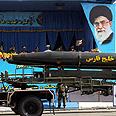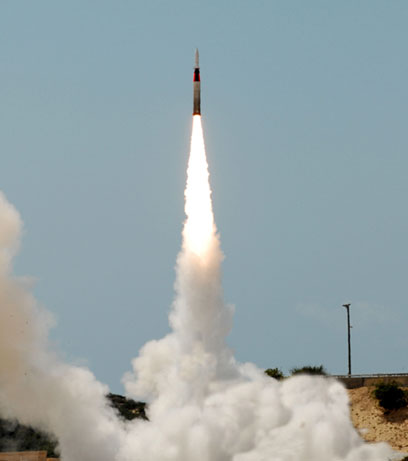
The Iranian bluff
Op-ed: Tehran seeks dialogue with West as its military threat gradually diminishes
Over the past few months Iran has been purchasing huge amounts of food, and its citizens have been banned from withdrawing foreign currency from banks. In light of this, the West estimates that the Islamic Republic is preparing for the tightening of the economic siege, as well as for a military conflict and a forced war economy.
There is no doubt that the New York Times report on the resumption of direct talks between Iran and the United States marks yet another attempt by Tehran to loosen the noose around its neck. About a month ago the permanent members of the UN Security Council rejected Iran's "nine-step plan" to defuse the nuclear crisis with the West and instead passed a resolution demanding that Tehran stop enriching uranium to a 20% purity level and also ship all uranium enriched above five percent out of the country.
Therefore, the Iranians are seeking to resume the talks from a position of weakness and fear. They fear that the collapse of their economy will lead to a mass public protest and that the major bluff regarding their military capabilities will gradually be exposed. The West is becoming less and less impressed with Iran's claims of advanced capabilities and technology.
Earlier this week the large Israeli-American air defense exercise kicked off. Two armies with the most advanced warning and satellite systems will simulate an extreme scenario in which will Iran will launch hundreds of long-range missiles toward Israel. But the Iranians do not have the capability to launch such an attack, and they know it.
The Iranians are closely following, with great concern, the successes of the Iron Dome system against short-range missiles. They assume that the Iron Dome's technology is similar to that of Israel's long-range air defense systems: The Arrow 2, which has been operational for a number of years, and the Arrow 3, which is still in the experimental stage.
The Iranians read in the Israeli press that the success rate of the Iron Dome in intercepting missiles reaches 80%, and they assume, obviously, that the Arrow 2 has a similar success rate. However, they also have to take into account that the Arrow 2 has been upgraded and that the more advanced missiles are supported by improved radar systems. The math is simple: Even if the Iranians do manage to simultaneously launch 100 Shabab-3 missiles (1,200 km range), Israel would still be able to intercept them with 124 Arrow 2 and advanced Arrow 2 missiles – an 80% success rate.
There are two more factors that must be considered: The Iranian missiles are inaccurate, and some of them may hit Jordan. Moreover, in the future the successful interception rate of the Arrow 2 and Arrow 3 will surpass 80%. Since the Shahab is more expensive than an Arrow missile, it would be a shame for the Iranians to launch them knowing they would not cause serious damage.
The Israeli security establishment is making these same calculations, so there is no need to get overly anxious when a few public figures speak of Iran's military capabilities.
In light of all this, the Iranian military threat is gradually diminishing. These are the threats of a suicidal regime, but the ayatollahs do not plan on committing suicide, they want the Lebanese to do it for them. Iran is seeking dialogue in hopes that the West will ease some of the economic pressure.











